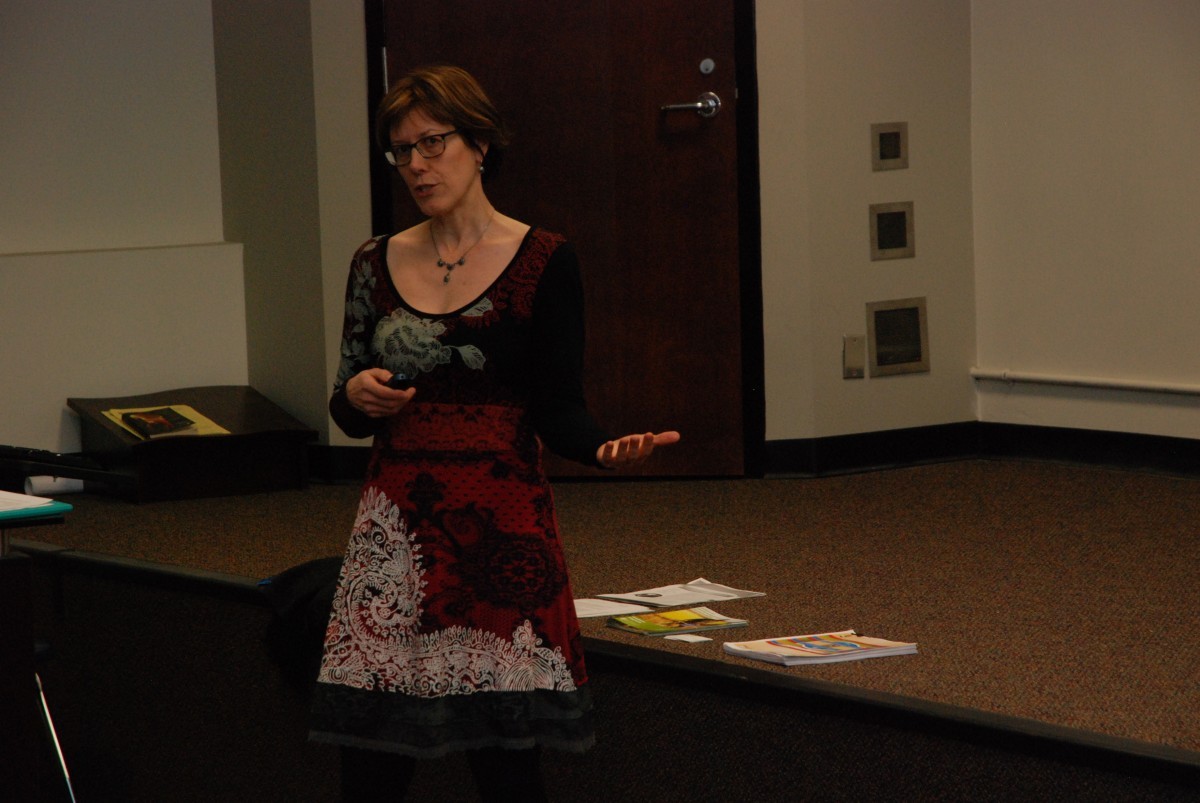
Professor M.J. Barrett from the University of Saskatchewan presented her research on reciprocal communication between humans and plants & animals.
Communicating with animals and plants can help ‘bridge the human-nature divide,’ professor says
Guest lecturer from U of S discusses research into reciprocal human-animal communications
There are multiple ways of knowing and communicating, including communicating with plants and animals, said M.J. Barrett, University of Saskatchewan professor who studies human-nature relations, during a recent presentation in the Faculty of Education.
Humans simply need to become more attuned to the ways they can communicate and send messages besides just using language, Barrett said.
Professor Barrett, who is an assistant professor in the interdisciplinary graduate School of Environment and Sustainability at the U of S, visited the U of M on March 23 to discuss her research into human communications with the natural world.
Barrett’s studies examine how expanding human ways of knowing, including intuitive/spiritual communicating with animals, can bridge worldviews. Barrett is currently the lead on a project that is “examining the contributions of intuitive interspecies communication to bridging the human-nature divide.”
She is also exploring ways in which interspecies communication can provide important insights into all research endeavours.
Barrett said she began to have an interest in the natural world as a 10-year-old.
“I loved the outdoors and the trees.”
Thus began her lifelong exploration of humans’ abilities to communicate with the beyond-human world.
As a professor, she says she thrives on taking students “out of their comfort zone,” with concepts like being able to communicate with trees and plants and, as humans, to receive communication back from the natural world.
“There are different ways of knowing—multiple ways of knowing,” Barrett said.
She must also help students to get over the popularly held belief that “people who talk to nature are usually crazy.”
“I don’t know why, but this was inherently logical for me,” said Barrett.
She encouraged the audience to take time out of their active lives and avoid getting caught up in mental chatter in order to be able to properly tune in to nature.
“Our busy culture, our busy way of life makes it difficult to engage in.”
But it can be extremely worth it when it is successful, she said.
“The conversations with animals…that are possible—That is still blowing my mind,” she said.
Many graduate students and academics have told her that they would like to incorporate communicative relations with the natural world in their research and pedagogy, but are afraid to because they might not be “considered legit,” she said, or taken seriously. Barrett said this attitude is slowly changing.
She said the nature of her studies has fit well with some Indigenous studies and ways of thinking. “Indigenous knowledge and Western knowledge can be separate, but if you talk about animal communication, it brings the two together.”
Barrett noted she sees a “real convergence” happening with Indigenous knowledge and learning and Western culture. Increasingly, both cultures are concerned about the increase in environmental destruction throughout the world, and ways to ensure that nature and the natural world are preserved.







Fascinating! I find the world of interspecies and animal communication one of the most intriguing areas to explore and it has so much potential for opening up a better understanding.